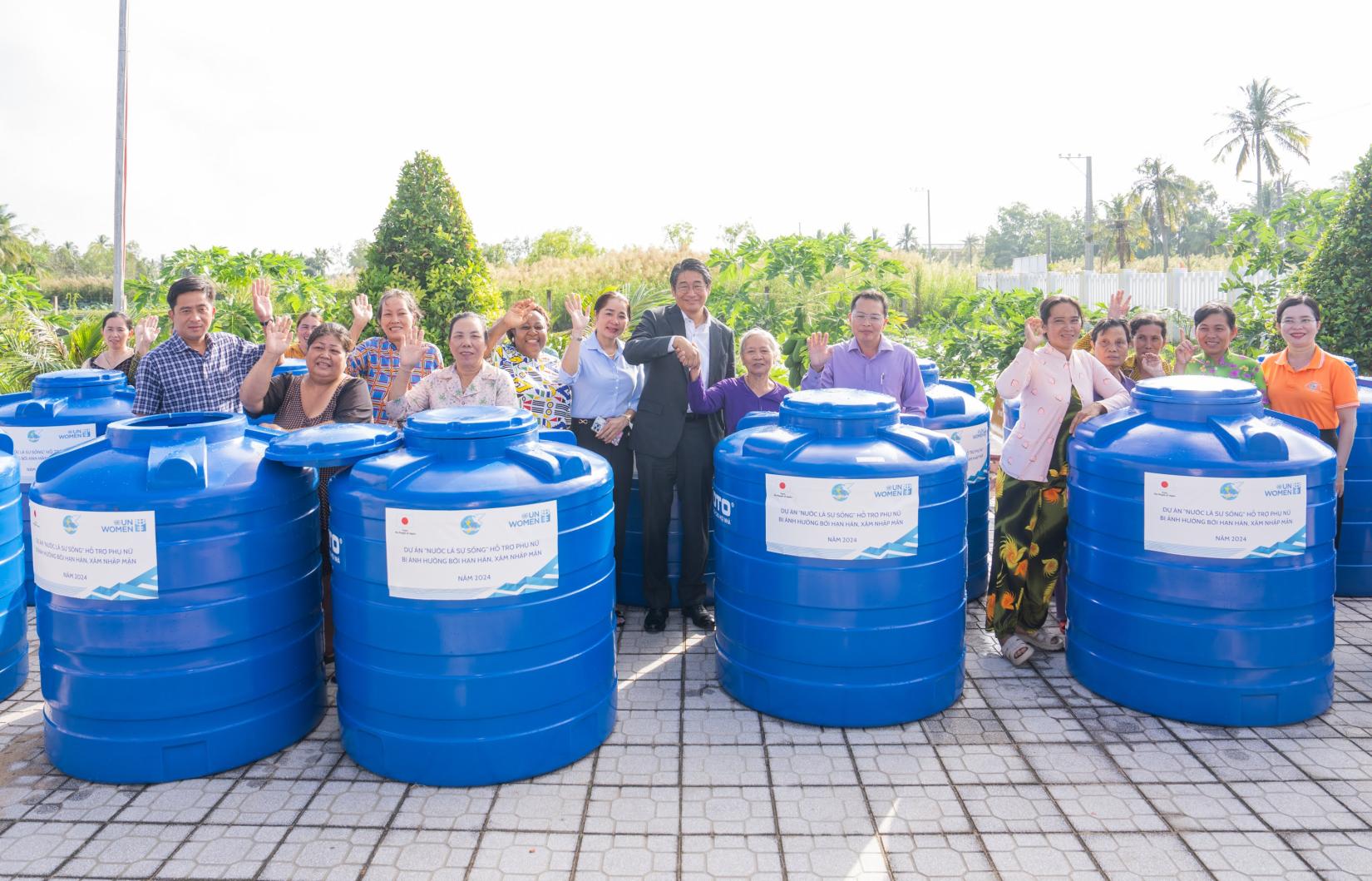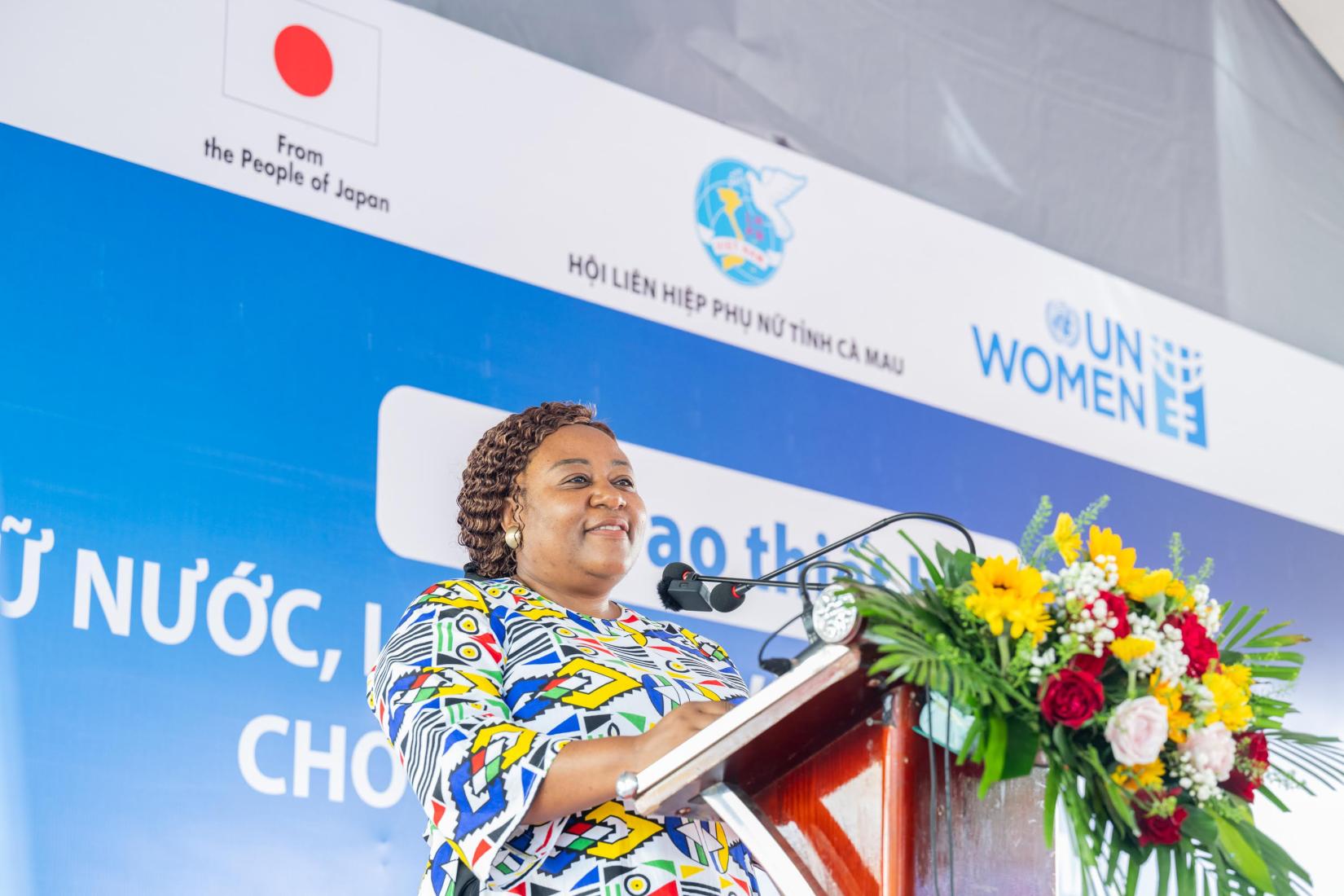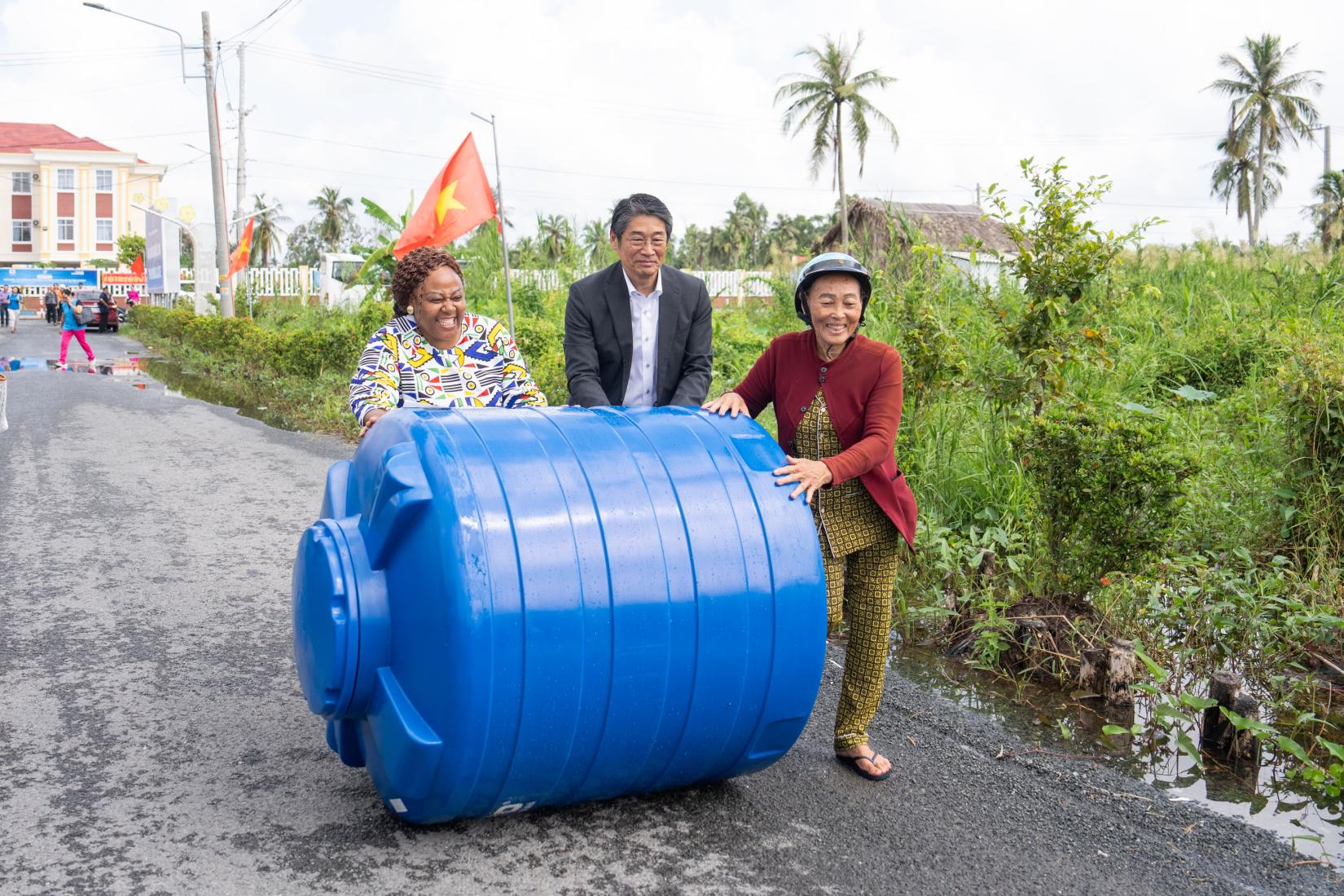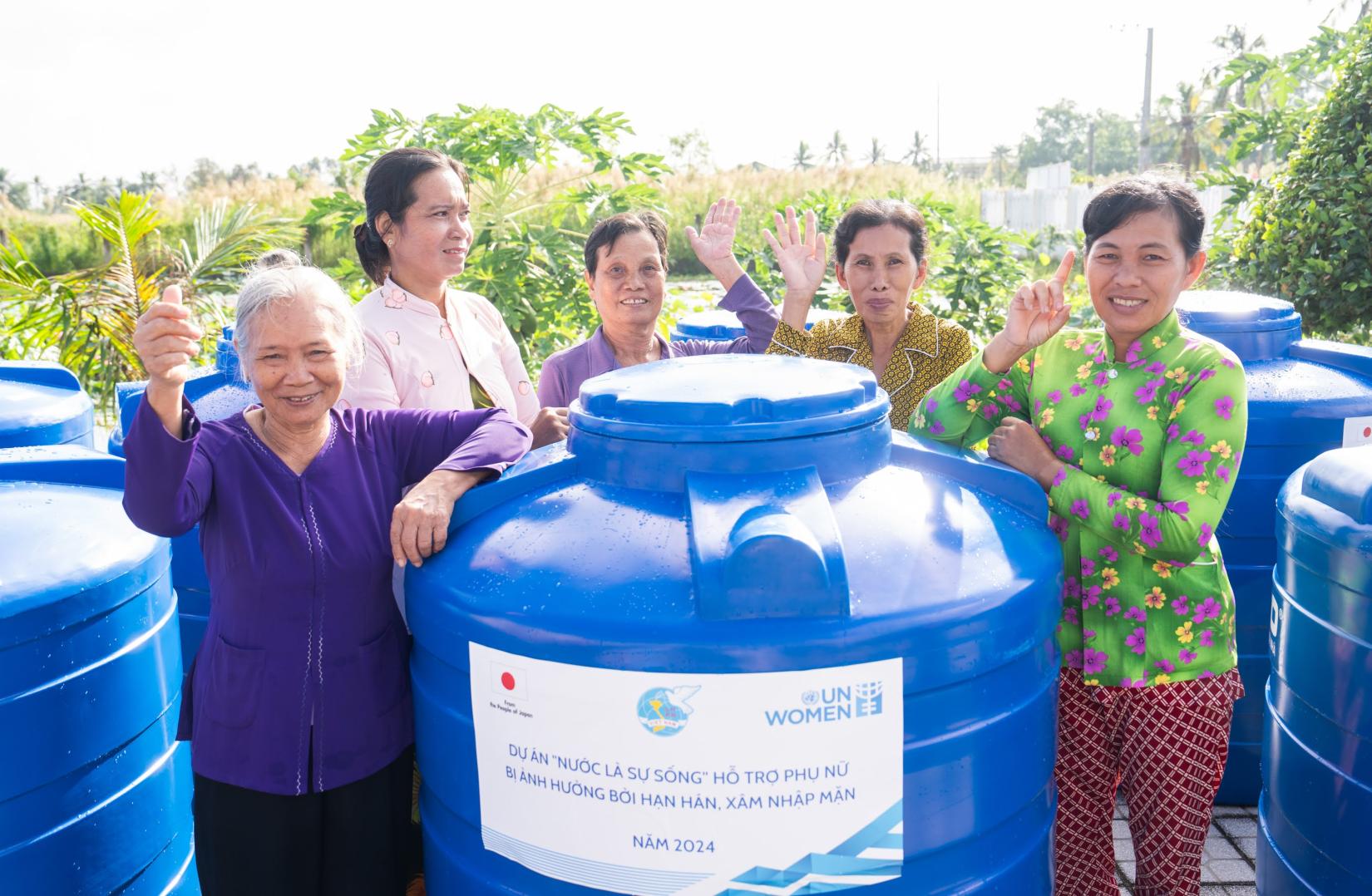UN Women and Japan Join Forces to Support Women Facing Drought and Saltwater Intrusion in Ca Mau and Ninh Thuan
06 November 2024
Ca Mau, November 5, 2024 – In response to the severe impacts of drought and saltwater intrusion, the United Nations Entity for Gender Equality and the Empowerment of Women (UN Women) and the Government of Japan are partnering to support 7,200 residents, especially vulnerable women, in the provinces of Ca Mau and Ninh Thuan.

The “Water is Life” project, funded by the Government of Japan and led by UN Women in collaboration with the Women’s Unions of Ca Mau and Ninh Thuan, is a year-long project running from 2024 to 2025. By providing water storage tanks, filtration systems, efficient water-saving equipment, and targeted communication programs, this project aims to enhance women’s sustainable access to clean water, improve their livelihoods, and contribute to the prevention of gender-based violence in these provinces.
“Women carry the primary responsibility for water collection and caregiving in their households, making them the first and hardest hit by water scarcity,” said Ms. Caroline Nyamayemombe, UN Women Representative in Viet Nam. “The ‘Water is Life’ project not only eases these burdens by securing vital water supplies but also empowers women in the frontline of building community resilience against climate impacts.”

Due to water scarcity, women often spend an additional two to three hours each day collecting water, which affects their health, limits work opportunities, and increases their exposure to gender-based violence when traveling far from home. Additionally, a lack of clean water contributes to the spread of infectious diseases, especially impacting children, pregnant women and the elderly, and thereby increasing caregiving responsibilities.
As part of this project, UN Women and the Government of Japan are providing water tanks to households and filtration systems to schools and health centers to improve sanitation for children and local residents. Furthermore, in alignment with the provinces’ development plans for water provision, this project is establishing linkages with private sector investors in water-saving technologies, with a commitment to empowering women, as the provinces continues to pursue long term solutions of this climate-induced issue. With the Government of Japan’s support, it is estimated that 7,200 people, especially vulnerable women, will benefit from these efforts.
“We hope that this project will improve access to clean water for women and children living in Ca Mau, and that this will lead to the revitalization of agriculture and other industries, as well as securing livelihoods for women in vulnerable positions”, said Mr. Ito Naoki, the Ambassador of Japan to Viet Nam.

NFrom November 5 through the end of December 2024, more than 420 women in Khanh Binh Tay Commune, Tran Van Thoi District, Ca Mau, will receive water storage tanks to help reduce time spent on water collection, lighten caregiving burdens, and protect family health. Additionally, 200 women in need of improved agricultural irrigation will receive financial support for water-saving irrigation equipment, following the declaration of a Level 2 drought emergency in Ca Mau.

Facing severe drought, significant saltwater intrusion, and a heightened risk of wildfires, Ca Mau and Ninh Thuan are among Viet Nam’s most climate-vulnerable regions. Prolonged droughts are damaging agriculture and impacting the health and livelihoods of residents, particularly women and children responsible for household water supplies. In Ca Mau, saltwater intrusion in 2020 affected over 29,644 hectares of farmland, drastically reducing rice and vegetable yields and costing an estimated VND 107 billion. Rising water scarcity has forced over 20,000 households to buy water at high prices, affecting their ability to afford other essentials.
In Ninh Thuan—the driest province in Viet Nam—prolonged droughts led to over 7,873 hectares of farmland being abandoned between 2019-2020. Here, the shortage of fresh water has placed 72,000 people at risk of food insecurity, while more than 12,000 households, encompassing nearly 50,000 people, lack access to drinking water. With surface and groundwater sources drying up, around 110,000 livestock have suffered malnutrition or died from lack of water and food.





